
The Just Adventure 2014 Year in Review
The adventure game genre has experienced a resurgence over the past few years and it feels as though we’re living in the second Golden Age of Adventure games.
The editorial staff at Just Adventure asked me if I’d be willing to put together a 2014 Year in Review. Instead of doing all the writing myself, I requested a list of games from all other reviewers — including commentary — that I could edit together. On behalf of the Just Adventure staff, I hope you enjoy our thoughts.
A State of the Union
The adventure game genre has experienced a resurgence over the past few years, and I attribute it to two factors. The first is DoubleFine’s wildly successful KickStarter in 2012. Tim Schafer, the famous LucasArts alum behind Day of the Tentacle and Grim Fandango, wanted to build another point-and-click game. The fans got behind him in a big way with the project shattering many KickStarter records with more than 87,000 backers. This led to a lot of developers funding successful Kickstarters to create adventure games.
The second element of the adventure game resurgence is Telltale Games, which has had remarkable success taking existing franchises and telling great stories without resorting to a first-person shooter mechanic. Games such as The Walking Dead and The Wolf Among Us and, more recently, the beginnings of Tales from the Borderland and Game of Thrones have opened up many people to alternate methods of gameplay.
The end result is that we have a lot more adventure games being created today than we did five years ago. We’ve had a mix of modern-looking titles such as J.U.L.I.A. Among the Stars and The Vanishing of Ethan Carter, and games with old school visuals such as the Blackwell series and A Golden Wake. Many recent adventure titles such as Cognition. exist somewhere in between. What’s more, lots of the old school games are getting a fresh coat of paint with remake releases such as Gabriel Knight and Gold Rush!, with announcements of more to come, such as Grim Fandango and Day of the Tentacle. It feels like we’re living in the second Golden Age of Adventure games.
In My Own World
This year, I personally reviewed sixteen different games. JustAdventure reviewed 51 games in total. Twelve of the games I tackled were 2014 releases, the remaining being a replay of the first four Broken Sword games. Unfortunately, this year I felt bit like a grumpy old man, with more criticism than praise to share. Despite that, I still love stepping into the shoes of our adventurer counterparts and experiencing the world through their eyes.
What Makes an Adventure Game?
One of the games that came across my desk this year was Shadow Puppeteer. I played through the first level and declared, “This is a platformer, not an adventure game.” I cancelled my review and the situation made me ponder the question, “What makes a game an adventure game?” (Note: the game was reviewed by my esteemed colleague Dawn Appelberg who gave it top marks.)
I’ve seen a lot of games called “adventure” even though they share little in common with the staples of the genre. Sometimes it feels like marketers are trying to co-opt the name of our favorite game genre without understanding it. The games can be fun and sometimes involve a plot and character growth, but I still groan internally when I see them.
I was introduced to adventure games in the early days of computers, playing games from Sierra, Infocom, and LucsArts. To me, these are the games that created the genre. The focus is on picking up everything that isn’t nailed down, talking to colorful characters and putting items together in unexpected ways to create an intriguing, interactive story. These tenants make an adventure game.
Let’s look at some of these aspects in a bit more detail:
- Exploration: In earlier adventure games, walking through the land, examining your surroundings, and learning about the area is important. Finding the magical door in King’s Quest 2 or the burnt house in Quest for Infamy provide you with important plot pieces needed to progress the game.
- Inventory Puzzles: Inventory puzzles are probably the most vital aspect of the adventure genre. As previously mentioned, pick up everything that isn’t nailed down. Then look for inventive ways to use the items you collect. As one example, you get a carrot in King’s Quest 1 from the garden behind the castle that you can use to lure a goat to a troll bridge, where the goat knocks the troll out of the way so you can cross. Another example is using a monkey as a monkey wrench in Monkey Island 2. Inventory items must often be used together, such as using the Rubber Duck with clamps and a clothesline to get a key on the train track in The Longest Journey. Finding inventory items and using them together in unexpected ways is part of my enjoyment of an adventure game.
- Fetch Quests: A fetch quests is the process of getting something for some other character. Rosella capturing the Unicorn for Lolotte in King’s Quest 4 is one example. Another example is retrieving potion ingredients for the Witch Doctor in Flight of the Amazon Queen so he can cure the rash of the jungle explorers. King’s Quest 1 was one big fetch quest to find the magic mirror, chest and shield. Fetch quests are often parodied in DeathSpank, an RPG created by Ron Gilbert of Monkey Island fame. Usually, the purpose of a fetch quest is to gain the character’s trust in order to get information or another item.
- Mini-Games: Mini-games are often short arcade sequences or isolated puzzles that the user must complete to continue the game. Sometimes these are more frustrating than fun. A good early example is the speeder ride to Kerona in Space Quest 1. In Quest for Glory 3, you can play Mancula with the natives. I don’t mind mini-games used sparingly, but sometimes they feel like crutches for integrating the puzzles around the plot. Monkey Island’s insult sword-fighting might be considered a mini-game, although it is so central to the plot it’s often considered one of the most memorial sequences of the game.
- Quick Time Events: Quick Time Events, or QTEs, are situations where you must take an action very quickly. This game play element exists on the fringe of classic adventure games, showing up rarely. The most prominent example I can think of is the goat puzzle from the first Broken Sword game, and folks hated it. Sometimes QTEs come into play in final battles, as when Freddy Pharkus only has a short time to pick up a chalk slate before he is shot by his beloved Penelope, or when LeChuck shows up and banishes Guybrush to another room. Telltale Games has made QTEs the central puzzle type in their recent games. I don’t think this is a good thing, because fast clicking is not a good replacement for having to think. However, many of my peers put The Walking Dead Season 2 on their best 2014 of lists, so my view is not universal.
Despite some games pushing the envelope of what it means to be an adventure game, there is still a lot of fun to be had in the genre. Let’s take a look at some of our top picks for 2014.
Our 2014 Favorites
In no particular order; here are some of the games we loved playing in 2014.
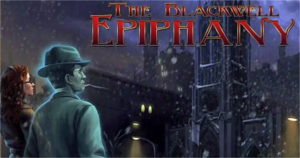
Blackwell Epiphany
Chosen by Jeffry Houser
Wadjet Eye Games consistently comes out with some of the best Indy Adventure games this side of The Longest Journey, and Blackwell Epiphany is no exception. It is the fifth and final game of the Blackwell series starring Rosa Blackwell and her spirit guide Joey Mallone. Together they help ghosts cross over to the next world. Their last adventure is the longest one they have, and ends with the most satisfying closure you could hope for.
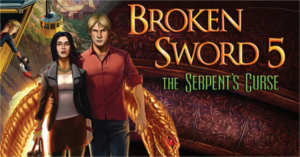
Broken Sword 5: The Serpent’s Curse
Chosen by Jeffry Houser
Broken Sword 5: The Serpent’s Curse was Kickstarted by the original creators. The game was split into 2 episodes, the first available in December 2013, with the second coming out a few months later. This is another solid story with Nico Collard and George Stobbart. It is a return to form for the franchise, once again focusing on puzzle-solving. It removed the action elements that proliferated in part 3 and 4. If you’re a fan of The Broken Sword series, move this one to the top of your list.
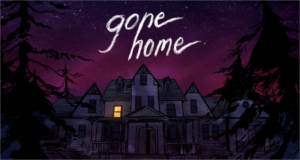
Gone Home
Chosen by Kyle Brown
Gone Home is a gaming experience I enjoyed all the way through its relatively short length; it’s one I’ll remember for a long time. Exploring the Greenbriar mansion and piecing together the events that led to its abandonment is fascinating, and everything in the home feels as though it belongs, as if it were meant to be there. In a media overrun with violence and combat, the Fulbright Company created a game that lasts on the virtue of its story. From start to finish, Gone Home is worth experiencing.
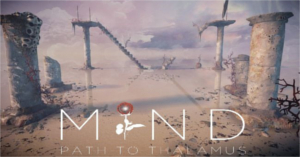
Mind: Path to Thalamus
Chosen by Ray Ivey
While this game was ultimately not my cup of half-caf mochachino Americano, Mind: Path to Thalamus is a beautiful game that is easy to admire. Created by a tiny team, this game takes the player on a dreamy and idiosyncratic journey within the mind of a guilt-ridden coma victim. It’s full of chewy puzzles and gorgeous landscapes. It’s weird and quirky and singular, and those are all good things.
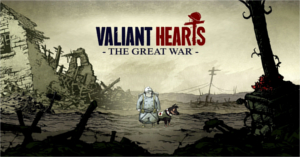
Valiant Hearts
Chosen by Kyle Brown and Ray Ivey
No adventure I played this year came close to winning me over more than Ubisoft Montpellier’s Valiant Hearts, a puzzle adventure game set during World War I. It’s full of incredibly sympathetic characters, fantastic music, fun puzzles and gorgeous art. It also has a great dog. Valiant Hearts is a game that will get under your skin. I was very sad to leave its war-torn world when the game was over.
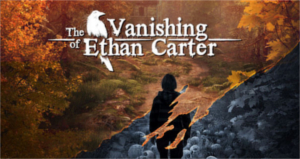
The Vanishing of Ethan Carter
Chosen by Bob Washburne and Ray Ivey
The Vanishing of Ethan Carter pretty much defies description. It’s an adventure, a mystery and a puzzle game all rolled into one. But mostly it’s a game in which you move through a staggeringly-realized first-person, real-time rendered environment that is so rich in realistic natural beauty that it almost defies comprehension. If that’s all the game had to offer, it would be worth checking out. But it has tons of weirdness to serve up as well. Chasing after a random astronaut through an evergreen wood was one of the weirdest, most chilling and memorable things I’ve done in a game this year.
It had everything a great game should have: the graphics are outstanding (you want to go back and explore even after finishing the game), the story line is compelling and unfolds nicely as the game is played, and the puzzles are innovative, logical and challenging. It’s addictive and fun and it leaves you thinking. It’s also very consistent, with no red herrings or out-of-place objects. Everything fits.
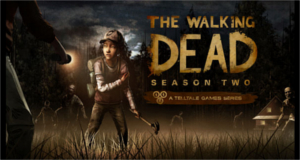
The Walking Dead Season 2
Chosen by Scott Alan, Kyle Brown, Bailey James and Ray Ivey
Telltale’s The Walking Dead: Season One is one of the greatest games of any genre that I’ve ever played. It tells the achingly harrowing story of how Lee, a damaged but determined and morally-centered survivor, helps mentor Clementine, a young girl orphaned by a zombie apocalypse. In Season Two, Clementine takes center stage. She’s a little older, stronger, and much tougher than the child you meet in the first game. Across the five horrifying episodes of the second season, you and Clementine face a series of impossible situations and agonizing decisions.
The game lacks the shock value of the first season, but still tells a compelling story. The story and writing make the game shine. It is adult, complex, surprising and satisfying. Telltale is operating at an extremely high level here, design- and production-wise. Telltale games have peerless voice acting and an extremely pleasing color-comic-book-come-to-life visual design.
The game approach reminds me of the “Choose-Your-Own-Adventure” style books I read as a child, except fleshed out with the latest multimedia technology. We could call them interactive movies. But so what? Everyone should be playing them.
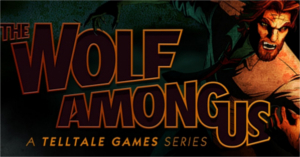
The Wolf Among Us
Chosen by Kyle Brown and Bailey James
Telltale continued it’s streak with The Wolf Among Us, an adventure game set in the graphic novel world of Fables. Featuring a well-rounded cast of fairytale misfits and a new system for action scenes, The Wolf Among Us elevates Telltales’ skills even further, and gives fans a taut, gripping murder mystery that thrills to the end.
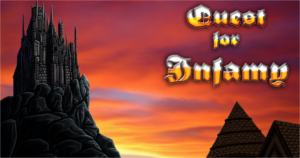
Quest for Infamy
Chosen by Jeffry Houser
Quest for Infamy is my favorite game to hate. On one hand, it contains all the tenets of adventure games that I love. There is much area to explore as well as many colorful characters, plenty of puzzles to solve and a compelling story to boot. It also adds some RPG elements, à la Quest for Glory, and gives you three different roles to play, each with slightly different challenges. On the other hand, I gave it bad marks in my review for being crude and misogynistic, and for its subpar voice acting. Despite that, I’d be back for the sequel.
Honorary Mentions
Episodic games are all the rage these days, so I wanted to give mention to two games that were started in 2014 but won’t be finished until 2015. These are games I was excited to start, and I can’t wait for the continuation.
Broken Age
Chosen by Kyle Brown and Jeffry Houser
Broken Age is an important game for adventure gamers because it is the result of Double Fine’s Kickstarter that helped re-launch our genre into the limelight. The game presents a fun, quirky environment, with two main characters whose lives quickly become intertwined. It includes beautiful graphics and an all-star cast. We can’t wait for the second half of the game to come in 2015.
Dreamfall Chapters
Chosen by Jeffry Houser
The Longest Journey is one of my all-time favorite adventure games and Dreamfall is a game with an awesome story, but it’s ultimately disappointing and has a cliffhanger ending. Dreamfall Chapters is finally supposed to complete Zoe’s story. Unfortunately, only one chapter out of five has been released to date. The first chapter shows promise; I’m excited about this game and eager to see the story continue. I hope to re-enter Stark and Arcadia every few months in 2015 to see the game progress.
A Look Ahead
I couldn’t wrap up 2014 without a look at what is ahead. I’m excited about 2015. We get to don King Graham’s adventure hat in the revamped King’s Quest game. Although the preview trailer is heavy on the action, the game designers assured me that the game is indeed an adventure. I’d love to see the fan-made King’s Quest game, The Silver Lining, release its fifth and final episode, but I have given up on that as their commercial ventures seem to have stolen their focus.
There are 10 different Kickstarter projects that I personally funded, and they have yet to be released. The two I’m most excited about are Mage’s Initiation from Himalayan Studios and SpaceVenture from Two Guys from Andromedia. Mage’s Initiation is from the team who re-worked King’s Quest 1, 2, 3, and Quest for Glory 2 under the name of Tierra Entertainment/AGD Interactive. SpaceVenture is a comedy space game from the creators of Space Quest. Instead of a janitor, you play a maintenance man and his robot dog. I expect the game will be a spiritual sequel to Space Quest. Alum is one game I Kickstarted, and two out of four episodes are just waiting for me to play. The remaining two episodes should come out in 2015.
Other highlights from my Kickstarter list are The Interactive Adventures of Dog Mendonça & Pizzaboy, Kelvin and the Infamous Machine, and Thimbleweed Park, the old school game from Monkey Island creator Ron Gilbert.
Telltale has two new series, Tales from the Borderland and Game of Thrones, which will continue into 2015. I also expect a game or two from Wadjet Eye games – my favorite indie adventure game company. With any luck, I’ll discover some unexpected treasures in 2015, too.
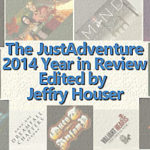
Leave a Reply